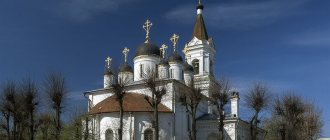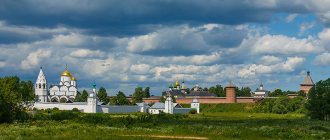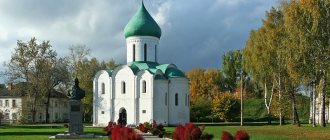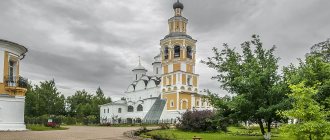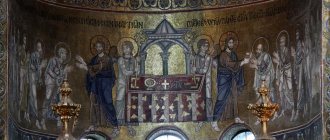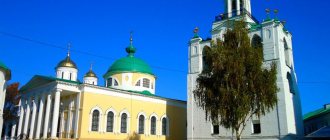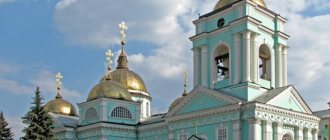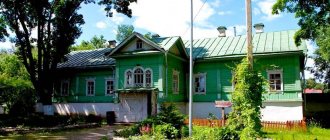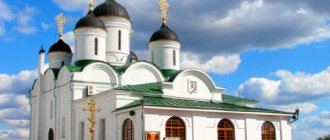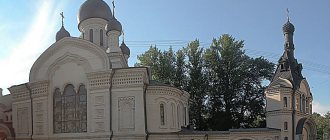Mir
Russia Vologda Region Spaso-Kamenny Monastery Map loading in progress...
{"format":"leaflet","minzoom":false,"maxzoom":false,"limit":50,"offset":0,"link":"all","sort":[""], "order":[],"headers":"show","mainlabel":"","intro":"","outro":"","searchlabel":"\u2026 \u0441\u043b\u0435\ u0434\u0443\u044e\u0449\u0438\u0435 \u0440\u0435\u0437\u0443\u043b\u044c\u0442\u0430\u0442\u044b","default":"","import-annotation":false,"width ":"auto","height":"350px","centre":{"text":"","title":"""link":"""lat":59.6075450000000017780621419660747051239013671875,"lon": 39.57397499999999723740984336473047733306884765625,"icon":""},"title":"","label":"","icon":"","lines":[],"polygons":[],"circles":[ ],"rectangles":[],"copycoords":false,"static":false,"zoom":8,"defzoom":14,"layers":["OpenStreetMap"],"image layers":[] ,"overlays":[],"resizable":false,"fullscreen":true,"scrollwheelzoom":true,"cluster":false,"clustermaxzoom":9,"clusterzoomonclick":true,"clustermaxradius":80, "clusterspiderfy":true,"geojson":"","clicktarget":"","showtitle":true,"hidenamespace":false,"template":"","userparam":"","activeicon": "","pagelabel":false,"ajaxcoordproperty":"","ajaxquery":"","locations":[{"text":"\u003Cb\u003E\u003Ca href=\"/palomnik/%D0% A1%D0%BF%D0%B0%D1%81%D0%BE-%D0%9A%D0%B0%D0%BC%D0%B5%D0%BD%D0%BD%D1%8B%D0%B9_ %D0%BC%D1%83%D0%B6%D1%81%D0%BA%D0%BE%D0%B9_%D0%BC%D0%BE%D0%BD%D0%B0%D1%81%D1 %82%D1%8B%D1%80%D1%8C\" title=\"\u0421\u043f\u0430\u0441\u043e-\u041a\u0430\u043c\u0435\u043d\u043d\u044b\u0439 \u043c\ u0443\u0436\u0441\u043a\u043e\u0439 \u043c\u043e\u043d\u0430\u0441\u0442\u044b\u0440\u044c\»\u003E\u0421\u043f\u0430\u0441\u 043e-\u041a\u0430\u043c \u0435\u043d\u043d\u044b\u0439 \u043c\u0443\u0436\u0441\u043a\u043e\u0439 \u043c\u043e\u043d\u0430\u0441\u0442\u044b\u0440\ u044c\u003C/a\u003E\u003C /b\u003E\u003Chr /\u003E\u003Ca href=\"/palomnik/%D0%A1%D0%B2%D0%BE%D0%B9%D1%81%D1%82%D0%B2%D0%BE :%D0%90%D0%BD%D0%BD%D0%BE%D1%82%D0%B0%D1%86%D0%B8%D1%8F\» title=\»\u0421\u0432\u043e\ u0439\u0441\u0442\u0432\u043e:\u0410\u043d\u043d\u043e\u0442\u0430\u0446\u0438\u044f\»\u003E\u0410\u043d\u043d\u043e\u0442\u 0430\u0446\u0438\u044f \u003C/a\u003E: "'\u0421\u043f\u0430\u0441\u043e-\u041a\u0430\u043c\u0435\u043d\u043d\u044b\u0439 \u043c\u043e\u043d\u0430\ u0441\u0442\u044b \u0440\u044c"' \u043e\u0441\u043d\u043e\u0432\u0430\u043d \u043e\u043a\u043e\u043b\u043e 1260 \u0433\u043e\u0434\u0430, \u0 43e\u0434\u0438\u043d\u0438 \u0437 \u0434\u0440\u0435\u0432\u043d\u0435\u0439\u0448\u0438\u0445 \u043c\u043e\u043d\u0430\u0441\u0442\u044b\u0440\u0435\ u0439\u0420\u0443\u0441\u0441 \u043a\u043e\u0433\u043e \u0421\u0435\u0432\u0435\u0440\u0430","title":"\u0421\u043f\u0430\u0441\u043e-\u041a\u0430\u043c\u0435\ u043d\u043d \u044b\u0439 \u043c\u0443\u0436\u0441\u043a\u043e\u0439 \u043c\u043e\u043d\u0430\u0441\u0442\u044b\u0440\u044c","link":"","lat":59 .6075450000000017780621419660747051239013671875 ,"lon":39.57397499999999723740984336473047733306884765625,"icon":""}],,"imageLayers":[]}
59.607599; 39.573465
Russia, Vologda region, Ust-Kubinsky district, Kamenny island
Vologda Region
Russia
Telephone.:
8 (921) 143-16-32
Spaso-Kamenny Monastery
founded around 1260, one of the oldest monasteries in the Russian North.
History[[edit]h2>
The founding date of the monastery is considered to be August 19, 1260, when the Belozersk prince Gleb Vasilkovich, grandson of the Grand Duke of Rostov Konstantin Vsevolodovich, was brought ashore here after being caught in a fierce storm. The prince, praying to God for salvation, vowed to found a monastery in that place where ships would land on some shore. The prince's ships were washed up by waves on Kamenny Island on the day of the Transfiguration of the Lord. The island did not turn out to be deserted: the prince found several desert dwellers on it (about 23), who, spending monastic life here, preached the Christian faith among the pagan coastal residents. The hermits had a small chapel for prayer meetings. The prince fulfilled his vow. He ordered the construction of a temple here in honor of the Transfiguration of the Lord, supplied it with icons and utensils, and founded a monastery with it. He entrusted the leadership of the brethren to one of the desert dwellers, Elder Theodore.
The newly founded monastery, called Spaso-Kamennaya, from the very beginning of its existence came under the special patronage of the Belozersky princes and quickly achieved prosperity, both in its monastic life, shining with the holiness of many ascetics who took monastic vows here, and in relation to its material well-being. Since the time of Prince Dimitri Donskoy, the monastery has become known to the Grand Dukes of Moscow.
In the 15th century, the Spaso-Kamenny Monastery was a large religious and cultural center, where Dionysius Glushitsky, Alexander Kushtsky, Joasaph Kamensky (the son of local prince Dmitry Zaozersky) labored.
In 1481, Rostov craftsmen erected a stone cathedral with two chapters - the first stone building in the Russian North. Later, the same craftsmen built the surviving cathedrals of the Ferapontov and Kirillo-Belozersky monasteries.
After the establishment of monastic states with the confiscation of monastic property into the treasury for the Spaso-Kamennaya Monastery, a time of decline began, which was accelerated by an even greater fire in 1774, which destroyed all the wooden monastery buildings to the ground. After this fire, the Spaso-Kamenny Monastery was closed. And this desolation lasted 26 years.
In 1801, by order of Emperor Paul I, the monastery was restored under the name of the Belavinskaya Spaso-Preobrazhenskaya Hermitage, since the brethren of the Belavinskaya Epiphany Hermitage along with their property were transferred here.
The restored monastery quickly began to develop again and acquire the religious significance that it had enjoyed before.
In 1892, by decree of the Holy Synod, the monastery was returned to its former name of Spaso-Kamenny. The abbots of the monastery bore the rank of archimandrite.
The Soviet government closed the monastery in 1925. The monks were driven away, and in the living quarters they tried to set up a colony for juvenile delinquents who fled in the fall. In addition, the autumn fire damaged many buildings. After closing in 1925, the oldest temple in the Russian North (by that time already five-domed) was destroyed by an explosion. In its place stands a pile of rubble.
In 1937, the Transfiguration Cathedral was blown up for the sake of bricks that they wanted to use for the construction of the local House of Culture. The resulting brick could not be used for construction. During the war, a fish receiving and processing facility was established on the island.
Until 1971, a full-time watchman of the district department of culture lived here. When this position was reduced, the island became a haven for local fishermen and hunters. Currently, of the monastery buildings on the island, only the unique Assumption Church-bell tower of the 16th century has survived.
Despite the destruction of the Spassky Cathedral, the monastery is still listed among the architectural monuments of the 15th-17th centuries, since the Assumption Church “like the bells” of the 1540s has been preserved. the buildings.
Northern summer resident - News, Catalog, Consultations
The road from Vologda to Kirillov runs along the shore of the huge Kubenskoye Lake, sometimes moving away slightly, then approaching it again. Since ancient times, a large, busy highway ran here, connecting Moscow with Beloozero,
with Onega and the White Sea. True, “gray-haired” antiquity is rarely found on this path now. From time to time, now on the right, now on the left, now in front, a white stone church or chapel of some ancient village will flash, an interesting hut with intricate carvings will suddenly appear, or a cheerful round dance of black-heated baths will spin around the outskirts. Here and there along the road you can see old, now motionless, frozen in silence, like lonely guards, wooden windmills. Here, in the North, you can see with your own eyes the harmonious fusion of Russian folk architecture with the landscape.
In the middle of Lake Kubenskoye, on a small rocky island, formerly, like the fairy-tale city of Pushkin’s Prince Guidon, the Spaso-Kamenny Monastery (ill. 65), one of the oldest monastic monasteries in the North, rose from the waters. Destroyed in the mid-1930s, now it appears to us only in the form of a church-bell tower, rising alone among a pile of ruins, but still clearly visible from afar, from the road.
Spas-Kamenny. Photo from 1965
The Spaso-Kamenny Monastery arose around 1260. Its founder was Prince Gleb Vasilkovich, the first of the princes of the independent Belozersk principality. The legend about the founding of the monastery tells how Prince Gleb, sailing from Beloozero to Veliky Ustyug, was caught on the way on Lake Kubenskoye by a strong storm. The ship washed up on a small island called Kamenny. In honor of his salvation, he “sent a man from the tree and built a wooden church”, establishing a monastery here. In the 15th century the thriving monastery already had numerous wooden cells and a refectory, and the church was decorated with “wonderful patterns” and had “wonderful icons and books” in its interior. However, a strong fire in 1478 turned all the buildings of the monastery into ashes. In the same 1478, appanage prince Andrei Menshoi, brother of Sovereign Ivan III, who owned Vologda, Kubena and Zaozerye, began the construction of a new stone Transfiguration Cathedral and completed its construction in 1481. This was the first monumental temple in the northern lands of Rus': “ where in that land from the beginning of the world there was nothing of stone from the temples, the earth removed it.” For its construction, architects and masons were apparently invited from Rostov, to whose diocese the monastery belonged. This cathedral, built at the height of the reconstruction of the Moscow Kremlin, was of a typical type for Central Rus' in the second half of the 15th century. cross-domed, four-pillar, three-apse church, placed on a basement. Its cubic volume, completed with three tiers of kokoshniks with a light dome in the center, was covered with a system of box vaults with stepwise raised girth arches. A similar type of temple developed in the architecture of the Central Russian principalities (Moscow, Rostov, Tver) at the end of the 14th and the first half of the 15th century. based on the ancient traditions of Vladimir-Suzdal architecture. However, unlike its distant prototypes, as well as its closest predecessors - the early Moscow and Tver monuments of this time, it was not white stone, but brick. White stone was used only in individual decorative details - in the perspective portals and capitals of the wall blades and apse beams, which in shape are very close to similar elements of the decoration of Moscow churches. The transition to brick construction in the mid-15th century. in the architecture of North-Eastern Rus', especially in Moscow, is widely noted in chronicles, which showed great interest in the new building material. It is curious that it is also reflected in the local monastery chronicle: speaking about the construction of the Cathedral of the Transfiguration, the chronicler emphasized that “brick (according to other lists, “stone”) was transported from Tver and Staritsa-gorodok.” An explanation for this should be sought in the socio-political situation that developed in North-Eastern Rus' at the turn of the 70s and 80s. XV century. Obviously, the impossibility of making bricks on site or near the building forced the customer, Prince Andrei Menshoy, to resort to the help of his closest neighbor - Tver, which had fairly good connections with the North. More distant and, moreover, busy with its own extensive construction, Moscow was, in addition, at this time, engulfed in civil strife that broke out between Ivan III and his brothers, the Uglich prince Andrei the Bolshoi and the Volotsk prince Boris. Therefore, Tver provided the distant northern construction site with bricks, and Staritsa with white stone, which was prepared here in large quantities. Despite its proximity to Moscow architecture, the Cathedral of the Spaso-Kamenny Monastery had a number of features that indicate a special interpretation of this type of building by Rostov architects. He played a huge role in the entire further development of the religious architecture of Belozerye, largely determining its main features. The cathedral had two domes. Above the south-eastern corner of its main volume rose another, small light dome, marking the chapel in the deaconnik (southern apse). Such additional chapters above the chapels, placed in one of the side altar apses, later became one of the characteristic features of the architecture of the Vologda-Belozersky region, going back to the same early Moscow churches (the Church of the Nativity of the Virgin Mary with the chapel of Lazarus and the second cathedral of the Chudov Monastery with the chapel of the Annunciation in the Moscow Kremlin ). The facades of the northern cathedral had abundant decoration - patterned belts that decorated the basement above the basement, and the upper parts of the walls, altar apses and dome drums. The belts consisted of a curb, a runner, rectangular depressions, as well as terracotta relief slabs (tiles) and balusters. These motifs are well known from a number of contemporaneous Moscow churches (the Church of the Spirit (1476-1477) in the Trinity-Sergius Lavra, the Church of the Deposition of the Robe (1485-1486) in the Moscow Kremlin, the Church of the Nativity (1509) in Stary Simonovo). However, here for the first time they formed their own special “alloy”, which later formed the basis of the local pattern, already familiar from the monuments of the Spaso-Prilutsky Monastery. The attention that Prince Andrei Vasilyevich paid to the new building is evidenced by two pieces of liturgical utensils specially ordered for the cathedral under construction - a paten and a chalice (Vologda Museum). The paten is a forged silver dish - round, quite deep, with a narrow bent side. Only the engraved image of the Savior Not Made by Hands on the ubrus, placed at the bottom, speaks of its purpose. There is an inscription along the side: “The dish for the door to the church, the transfiguration of our Lord and God [[Jesus][[Christ] was made quickly on stone by order of Prince Andrei Vasilyevich the Lesser in the summer of 6986 [1[1478 ]. A smooth forged silver chalice—a vessel with a slightly weighted hemispherical bowl on a smooth “apple-shaped” stem and a wide base—is decorated with an engraved image of the Deesis. Carved figures of saints in “golden” circles are placed on the chalice bowl - Christ, the Mother of God, John the Baptist, archangels Michael and Gabriel and apostles Peter and Paul. All of them are unusually graphic. Drawn in thin lines, the saints gracefully bow their heads, stretch out their hands in prayer, or hold scrolls with them. The robes are made with drier, straight lines and folds. Below, on the pallet, along a gilded stripe there is an inscription: “This chalice was made by order of the Righteous Prince Andrei Vasilyevich the Lesser of Vologotsky.” The dish and chalice, which find analogies among similar Moscow products, were obviously made in Moscow and, judging by the inscriptions, at the same time. Intended for the cathedral being built, they thereby date the beginning of its construction to 1478. Moreover, in the inscription on the chalice, Prince Andrei Menshoi is called Vologda (this is one of the few sources where the prince is identified by his true title). Another work associated with the contribution of the Moscow princes was kept in the Transfiguration Cathedral - a rather massive panagia from the early 15th century. (Vologda Museum). It is decorated on the front side with a scene of the “Ascension”, composed of cast, applied silver figures, and engraved images of the “Trinity” and “Our Lady of the Sign” placed on its inner doors. On the front side of the panagia, on the ornamented rim, in small frames there are also carved figures of Basil the Great, John Chrysostom and Gregory the Theologian. There is reason to believe that Vasily the Dark, who visited the Spaso-Kamenny Monastery during his stay in Vologda, put this panagia into the Transfiguration Cathedral. In the inventory of the Spaso-Kamenny Monastery of 1670, a mention of this panagia was preserved: “at the image of the Savior there is attached a large chased silver panagia, and on it in the middle is an image of the Ascension of Christ, and at the head is an image not made by hands in silver.” Since this item is similar to the panagia from the Simonov Monastery, where it was probably invested by the Moscow prince Vasily Dmitrievich, it can be assumed that both items were made in the Moscow princely workshops. The only surviving architectural monument of the Spaso-Kamenny Monastery is the Assumption Church, which was originally combined with the refectory chamber (the latter has been lost). They were both built in 1543-1549. two Rostov architects - Pohomy Goryainov and Grigory Borisov. The building was started by the first of these masters, apparently with the financial contribution of Vasily III, who visited the monastery back in 1528, during a pilgrimage. It was completed after a certain break by another master - one of the largest architects of the first half of the 16th century, the “church stone builder” G. Borisov, who by that time had built a whole series of temple buildings in the North (the Church of the Annunciation with a refectory 1524-1526 in Borisoglebsk monastery, etc.). Obviously, Borisov is responsible for the original architecture of this structure, which combines two widely used structures in the 16th century. type of buildings: pillar-shaped temple-bell tower and refectory. The architecture of the latter was more traditional in form. Its massive rectangular volume with a high basement was slightly elongated along the north-south axis (later extended to the west) and had, as usual, inside a large vaulted hall with a powerful pillar in class=”aligncenter” width=”672″ height=” 490″[/[/img]p>
Spaso-Kamenny Monastery, 1909
The Assumption Church, which adjoined the eastern wall of the refectory not along the longitudinal axis, but to its southern corner, brought picturesqueness to the composition. Its volume has a rather unique shape, close to the small pillar-shaped tiered churches “like bells”, common at the end of the 15th and first half of the 16th centuries. (churches in the village of Kolomenskoye, in Joseph-Volokolamsk, Boldinsky, Dorogobuzh, and Spaso-Prilutsky monasteries). The three-tiered pillar below, in the first two floors, has an unusual shape of an irregular octagon, only higher up it turns into a traditional octagon with a drum and a head at the end. The lower, blind tier was a basement; in the middle, with narrow arched windows in the edges, there was a church, and in the third, with open arches, bells hung. The tiers successively narrow upward by the size of the base that completes each of them, as if lightening the masses of the building as they develop upward. The corners of the pillar are decorated with ordinary wide blades, also tapering in width in tiers. And the octagon of the bell below, just under the arches, carries a wide belt of curbs, brick balusters and niches, that is, a characteristic decor that developed in the 16th century. in local architecture and well known from the temples of the Spaso-Prilutsky Monastery. The great proximity of the Assumption Church to the rest of the refectory churches of the Belozerye monasteries, including Prilutsky, Ferapontov and Kirillov, suggests that they were all built by the same architect - Grigory Borisov. The previous completion of the building in the form of three tiers of keel-shaped kokoshniks and a light drum with a head has not been preserved. In the second half of the 17th century. it gave way to the current one - bell arches and an octagonal pedestal, decorated with kokoshniks and crowned with an onion-shaped head on a thin neck. Now this unique Assumption Church, devoid of a refectory, stands alone and sad in the middle of the island.
G. Bocharov V. Vygolov
Vologda-Kirillov-Ferapontovo-Belozersk. Moscow, Publishing House "Iskusstvo", 1979
Nadezhda Pligina: “The restoration of the temple is spiritual construction”
The Spaso-Kamenny Monastery on Lake Kubenskoye is a unique creation of our ancestors, a testament to the strength of their spirit and the strength of faith. The oldest stone monastery in the Russian North, erected on a tiny piece of firmament, like a true embodiment of a miracle, soaring between water and sky... Initially, the monastery was wooden, and in the 15th - 16th centuries it acquired an appearance that remained almost unchanged until the 30s of the last century. The stone Transfiguration Cathedral was built in 1481, the bell tower - in 1543, the refectory - in 1549.
The monastery has seen a lot over the seven and a half centuries of its existence. Its history was forcibly interrupted in 1917. The monks were driven out, the cathedral was blown up in the 30s, only the bell tower survived... In subsequent decades, the abandoned temple was slowly destroyed by winds, rains and frosts. But the miracle did not leave the island monastery - there were people for whom its restoration became the work of their whole lives. The name of Alexander Pligin is now known to many. After his death in 2004, his like-minded people and followers took care of Spas-Kamenny. In 2006, the bishop's compound "Savior-Kamenny Monastery" was formed, and the destroyed shrine was transferred to the free use of the Russian Orthodox Church. Since 2007, restoration work on the island has been financed from the federal budget. Spaso-Kamenny Monastery is a monument of historical and cultural heritage of federal significance.
Nadezhda Pligina, head of the bishop's courtyard and director of the Spas-Kamen restoration enterprise, talks about how restoration work is going on the island.
— Nadezhda Aleksandrovna, how is restoration going on the island and what are the features of the 2012 restoration season?
The contractor carrying out work at the site is selected on a competitive basis. This year the contractor was the Moscow restoration organization Simantika LLC. Our company Spas-Kamen LLC, which has a license from the Ministry of Culture of the Russian Federation, worked all season on a subcontract basis.
— What exactly was done this summer?
Work continued on the restoration of the refectory chamber, which is part of the Assumption Bell Tower complex with the refectory. Last year, the first tier was restored: walls were erected, window openings and vaults were made. This summer, the central pillar in the refectory, on which the vault rests, was restored. To protect the unfinished building from the harmful effects of moisture, a temporary roof of 50 square meters was erected over it. meters. Next summer we are preparing to build the vault and walls of the second tier.
In general, the work of restorers resembles the work of a doctor. We even have similar terms: we examine the “body” of the bell tower, make a diagnosis and eliminate the cause of the destruction of the temple. During restoration, the injection method is used: deep holes are drilled in genuine brickwork, into which, after washing, a strengthening solution is injected. We “treat” cracks in masonry walls this way: we fill them with tow strands soaked in a special solution, and then rub them together so that the seams do not spoil the appearance of the wall. We tighten the “body” of the bell tower with a “bandage” - a strong metal tape.
—Can you tell when the refectory will be finished?
If current levels of federal funding are maintained, this will take four years, no less. It is necessary to build a second tier and roof, do the interior decoration, and solve the problem of heating the entire temple. Is it possible to do it faster? It is possible, but it is not useful for the temple. “Fast” means a lot of people, which means there will be no proper control over the quality of work. In addition, we have nowhere for a large number of people to live, and nowhere to store a large supply of materials. Therefore, our rule is “graduality and measuredness,” and by the grace of God we manage to follow it.
Tell us about the restoration organization Spas-Kamen LLC.
Our team has been formed for a long time: there are people who have been restoring the monastery since 1991 - from the moment when Alexander Nikolaevich Pligin began this work. The guys studied here under the guidance of Moscow specialists, then passed certification in Moscow, at the Institute of Restoration Art. This was necessary, since a license to carry out restoration work can only be obtained by having certified specialists - masons, carpenters. Several years ago, a project for the restoration of the Assumption Bell Tower and the refectory complex was developed using funds from the regional budget. Thanks to the presence of the project, we can receive budget funding.
— Who works as part of your company?
The restoration team is headed by the chief architect of the project. He creates a project, determines the order of work, gives technological instructions, and provides general management. After the death of the architect Alexander Alekseevich Asafov, the initiator of the restoration of the Spaso-Kamenny Monastery, work on the island was led by Muscovite Nikolai Nikolaevich Smirnov. Now he is not officially the chief architect, but he still comes here constantly, providing design supervision.
On the left - Smirnov N.N.
The “second” person is the chief engineer of the project, Ivan Georgievich Strelbitsky. He prepares working drawings for the structural elements of the building and calculates the strength of structures. Both of them - Smirnov and Strelbitsky - became dear people to us.
On the left is I. G. Strelbitsky.
The work crew is headed by Denis Poletaev, who is also responsible for all the equipment on the island and is the main “boatman-carrier.” Mason Sergei Popov, a unique creative personality, made a great contribution to the restoration. We couldn’t do it without the high-class carpenter Evgeniy Kalugin, masons Konstantin Zautorov and Dimitry Rozhin.
Vladimir Nikolaevich Lukin, deputy head of the Department of Culture and Protection of Cultural Heritage Objects of the region, and employees of the Department’s cultural heritage department provide us with all possible assistance in our work.
We have a small official representative office in Vologda. The main person there is engineer Marina Nikolaevna Mochalygina. She draws up estimates and prepares documentation for submitting applications, participating in competitions and submitting reports to the Ministry of Culture. No enterprise can exist without accounting, and we are lucky - we have an experienced chief accountant, Olga Ivanovna Kochurova. Daria Minenkova is responsible for our website, archive and museum.
— In the future – perhaps even in the long term – what do you think about the fate of the Transfiguration Cathedral?
We, of course, thought about the fate of the cathedral from the very beginning of the restoration. Alexander Nikolaevich wanted it to be restored. At one time there were doubts about this. A number of experts expressed the opposite point of view: it is necessary, they say, to leave the cathedral as it is, destroyed, as evidence of the era of vandalism and barbarism. There was a time when it seemed right. The cathedral, even ruined, remains a rare architectural monument, living evidence of the highest level of construction technology of that time... And then gradually came the understanding that this is, first of all, a temple where services were held for five centuries, Christian Sacraments were performed, and prayerful communication between man and God took place . In addition, the cathedral is a monastery tomb. Under these ruins lie the relics of the locally revered holy abbot Cassian and St. Blessed Basil, who lived in the 15th century. In front of the temple, on the side of the altar, the abbots are buried. Most likely, First Hierarch Metropolitan Varlaam was buried in the cathedral or near it in the 16th century. There are other burials inside the temple, and leaving them as ruins is not good. The saints, through prayerful labors and deeds to improve their souls, acquired the grace of God; Orthodox people treat them with reverence and reverence, and it pains them to see abandoned shrines….
Alexander Nikolaevich Pligin
Therefore, we plan to restore the cathedral. There is a lot of serious work ahead on the project. First of all, you need to decide which historical period to focus on in its restoration: in the 15th century, the building had one dome and a roof in the form of zakomaras, reminiscent of flames. In the 19th century, galleries were added to the main volume of the building and, instead of one, five chapters appeared at the end of the cathedral. The matter is complicated by the fact that the measurements of the building have not been preserved. Therefore, the ruins will have to be carefully dismantled, and the most expressive fragments of the masonry that survived the explosion will be left under cover as a monument - in the form in which they were preserved. Each stage of work must be accompanied by photographic recording and measurements, after which the disassembled and cleared areas must be covered. When this work is completed, then design can begin. We have historical information indicating that there are enough archival materials to develop a project for the reconstruction of the cathedral. I think it makes sense to organize a public discussion of the project at the level of the Regional Government, to achieve an examination that would allow the monument to be transferred from the category of ruins to the category of buildings, which would solve a number of problems with budget financing. Perhaps in the end it will be a recreation using old technologies and materials...
Alexander and Nadezhda Pligins
In any case, you need to approach the cathedral as a shrine, and not just as an architectural structure. The restoration of the temple is a “spiritual construction” of the entire circle of people who, willingly or unwillingly, participate in it.
— What are the difficulties associated with working on the island?
Almost all of our difficulties are associated with being cut off from the “mainland”. It is possible to bring building materials to Spas-Kamenny only in the spring, on high water, but even in this case you cannot bring much - there is no place to store them: after all, the dimensions of the island are small - 120 meters long and 70 wide. Therefore, first of all, we import bricks and sand, and such consumables as cement and lime have to be constantly delivered in small quantities. In order to ensure the operation of construction equipment - concrete mixers, for example - you need electricity, but there is none on the island. We use a diesel generator of six to seven kilowatts, but again we need to bring diesel fuel for it.
Unloading materials and disembarking people is complicated by the lack of a pier. Landing on the rocky shore is very difficult, almost impossible in summer. People have to drag bags of sand and cement, heavy beams, restoration bricks, each of which weighs seven and a half kilograms over the rocks... We cannot install a permanent pier: the spring ice drift will instantly destroy it, and in the summer the water goes away. A removable berth costs 750 thousand rubles. We would put it in a convenient place depending on the water level, and in winter we would put it away for storage on the shore of Kubena... We have already started saving money and would be glad for any help. This will make it possible to preserve boats and boats suitable for the island, and most importantly, it will make the already hard work of people easier.
Living on an island is also not easy. The space is limited, the living quarters are cramped, each with two or three people, who stay here continuously for three to four weeks: they work together, they relax together. But everyone has different habits, different characters... So we learn to tolerate, pity and forgive each other, sacrifice our passions for the sake of others...
— How are restoration work organized?
Specialists of Spas-Kamen LLC work on the island constantly, throughout the year. From the very early spring we begin preparations for the “hot” summer restoration season, and in late autumn and winter we protect the monument and maintain the life support systems on the island in working order. At one time, working at other sites, we created a material and technical base: we purchased equipment, a snowmobile, renovated a hotel, and bought a wind generator in half with donors. Now the hotel has heating and water, there is a boiler room on the island, a bathhouse has been built, and in winter we protect all this. The house of the Water Rescue Society is being restored. All this makes it possible to provide our workers with a constant, albeit small, income.
Procession. Photo by Alexey Kolosov
At exactly eight in the morning the foreman turns on the diesel engine and everyone goes to work. The workers do the masonry, design and manufacture various auxiliary mechanisms themselves. Rain, wind, snow - regardless of the weather, work continues until six o'clock in the evening. No smoking breaks or gatherings: a lunch break, a short tea break - and that’s it. The production process is managed by Ivan Aleksandrovich Pligin, our youngest son with Alexander Nikolaevich. He is responsible for the delivery of materials, for energy supplies, for food, for equipment. Among the equipment we now have at our disposal are several motor boats and a large boat, “Puteisky - 21,” which we managed to buy and repair last year. During this season, it carried materials, workers, pilgrims, and tourists.
— Five years ago, the Spaso-Kamenny Monastery became a bishop’s metochion. How often are services held here, do you have many parishioners?
Yes, the metochion was formed in 2006 by decree of the ruling bishop, Bishop Maximilian. Hegumen Dionysius (Vozdvizhensky) was appointed rector, and I was then appointed headman. In 2010, the restoration of the bell tower was completed, and inside it, on the second tier, the church was recreated. Since then, services have been held there. This year a new abbot was appointed - Abbot Nestor (Kumysh), who settled on the island. Divine services are held once a week, when we bring singers from Vologda - nun Ioanna and one of our volunteer assistants, whom she taught to sing, Lada Minenkova. They sing in an ancient Znamenny chant, which is now rarely heard anywhere. These are very beautiful monophonic chants; they are called “the melody of the Spirit.”
Squad "Spasiki"
"Spasiki" squad at the bell tower
In winter no one comes to services, but in summer pilgrims come.
— Who lives on the island permanently?
Workers - their “shift” lasts three weeks, and on the fourth they go home to rest. Then it remains Ivan Pligin or me. Now Father Nestor lives with us on the island. There is always one of the helpers - now, for example, a young couple from Moscow has settled there, they help us free of charge. I have already said that neither buildings nor equipment should be left unattended. It happens that strangers come to the island - both fishermen and rogue groups... But when they know that there are people here, they do not act outrageously.
- Not scary?
No! You can come to an agreement with everyone. Of course, you never know what to expect from such guests. But so far we have always managed to reach mutual understanding.
Many Vologda travel agencies offer tours to the island. How do you feel about tourists? Still, strangers, an idle public...
I think that dividing people into tourists, pilgrims, adventurers is a bad, sinful habit. The soul of every person, whether he realizes it or not, reaches out to God. Spaso-Kamenny Monastery is a place where prayer was performed for seven centuries; here the soul finds peace, albeit short-lived. That's why people go to Spas. Of course, it is much easier with organized groups arriving through a travel agency. I explain to them how to behave on the island, why you can’t climb the ruins - and there has never been a situation where people didn’t understand, weren’t inspired. But they live, in fact, in a different world, in a different environment. Sometimes there are misunderstandings with unorganized visitors. But if you talk in a good way, then they will understand everything. And sometimes these “random” people become our true friends and helpers.
- The restoration of the monastery has been going on for a total of more than 20 years - this is already history...
Yes, and we carefully preserve all her evidence. From the very beginning, a journal of architectural supervision was kept, which reflects the stages of restoration of the monastery. Here are notes from architects, sketches, tips, recommendations, reviews, and detailed photographs of the work process. All this is a real textbook on restoration. A wealth of material has been accumulated that I would like to present in a museum exhibition. The “chronicle” of the restoration of the monastery is constantly being maintained. The evidence of the participation of our volunteer assistants - representatives of various public organizations - in this work is very valuable to us.
A group of history teachers unloading bricks
— Tell us about the volunteers who work on the island.
Volunteers clean the area and perform heavy physical work that does not require special training. There are always people willing, we, as a rule, do not refuse anyone, but more often we work with people we already know. Living conditions on the island are such that we cannot accept many people and settle them here for a long time. But at the same time, of course, we really appreciate the help and are always grateful for it - our website provides information about all our helpers. For several years now, the “Spasiki” detachment, schoolchildren from Ustya-Kubenskoye, has been coming to the island. Cadets from the Vologda Institute of Economics and Law visited us twice. I thought that such young people no longer exist: intelligent, reserved - well, just students of the Corps of Pages! How they started working!.. With full dedication, seriously, selflessly - we haven’t seen such work for a long time. Two of these children were baptized in the lake last summer... For two years in a row, Ivan Zhivotikov’s student construction team, created under the Regional Government, has been working for us, this summer children from Vologda school No. 20 worked. Having left home, women come for a week or two and cook food , help with housework.
People arriving on the island find themselves in an environment that is unusual for them - an environment of order. Most people have now forgotten about this, they are used to living on their own. Here you need to obey the same regime for everyone: lunch and break at a strictly defined time, you need to pray before eating, smoking is allowed only in a certain place, swearing is prohibited, dressing in beachwear is the same... For many - both children and adults - This initially causes protest. And after a couple of days, look, they already like it! This is also the result of our common work, in some ways comparable to the restoration of a destroyed shrine: people learn a very important lesson about community life. And, despite the hard work and strict rules, many want to return to Spas again.
— Besides voluntary work, how else can you help Spas-Kamenny?
There are different ways you can help. For example, residents of the village of Borok, Sokolsky district, have been sending us vegetables from their gardens and winter preparations in the fall for many years in a row. In Vologda, our friends collect food: cereals, tea, sugar - everything that does not spoil. Sometimes these packages contain warm socks, bed linen or hand cream...
Laying personalized bricks
Last year, with the blessing of our abbot, Abbot Dionysius (Vozdvizhensky), we began collecting funds for the restoration of the monastery under the name “Name Brick”. Anyone who wants to help in this matter donates 100 rubles, he is given a certificate of donation, the priest commemorates him at the service, and the name of the donor is written on one of the bricks, which are then used to make up the vaults of the refectory. The good news is that many people responded to our call for help: after all, a person makes a sacrifice for Christ, driven by the Holy Spirit. Anyone who has a developed sense of patriotism, a sense of the Motherland, is capable of donating to the temple.
Interviewed by Svetlana GRISHINA
Photos courtesy of N. A. Pligina
Donations for the restoration of the Spaso-Kamenny Monastery can be transferred to the settlement account of the bishop's metochion "Spaso-Kamenny Monastery": account number 40703810312000001013 in the Vologda department. 8638 SB RF.
To participate in the “Name Brick” donation fundraiser, please call: 53-31-24 (Marina Nikolaevna Mochalygina), 8-921-683-55-08 (Nadezhda Aleksandrovna Pligina).
Cultinfo.ru
Current state[[edit]h2>
Since 1991, enthusiasts have been working to restore the Spaso-Kamenny Monastery. Subsequently, funds were allocated from the federal budget.
In 2006, on Kamenny Island, by decree of Archbishop of Vologda and Veliky Ustyug Maximilian (Lazarenko), the bishop's courtyard "Savior-Kamenny Monastery" was established.
Work continues on the island to recreate the refectory building, improve the territory, and preserve the unique ecosystem of the island. It is planned to recreate the main object of the monastery - the Transfiguration Cathedral.
Rescue refuge
People have lived on Kamenny Island (which was probably larger in the past) since ancient times. Archaeologists have dug to the Stone Age. The governor from Veliky Novgorod, according to legend, met a pagan temple here, destroyed it and erected a cross. The cross was worshiped for a long time by those who were fleeing the bad weather on Kamenny.
The time of the founding of the Spaso-Kamenny Monastery is lost in the mists of time. It is generally accepted that this is 1260. There is a legend about the Belozersk prince Gleb Vasilkovich, who was caught in a storm in Kubenskoye. The prince, praying to God for salvation, made a vow: in the place where he felt solid earth under his feet, he would build a monastery. The prince's ships washed up on Kamenny Island. Where, by the way, 23 elders were already ascetic, suffering from the poverty of funds and the malice of the pagans. So the prince’s vow and the prince’s patronage could not have come at a more opportune time.
According to another version, Gleb Vasilkovich did not build a monastery, but only a church. Because in written sources Dionysius, appointed only in 1331, is named the first abbot of the Spaso-Kamenny Monastery. However, the ancient history of the monastery (like ancient history in general) is full of blank spots. And the main source telling about those times, “The Legend of the Savior-Stone Monastery” by Elder Paisius, was written only at the end of the 15th century, was edited more than once and, by all accounts, contains many contradictions.
One way or another, already in the 14th century the monastery on Kamenny Island was an important missionary center of the Russian North. Future saints, founders of other monasteries - Alexander Kushtsky, Dionysius Glushitsky, Evfimy Syangzhemsky and others - took monastic vows and labored there.
From a tiny rocky island, the Russian Land received seven saints! The most revered in the monastery (and in the entire region) is St. Joasaph of Kamensky. In the world, Andrei, the son of Zaozersky Prince Dmitry the Lesser, was born in the 1430s - there is no exact date. During the strife between Vasily II and Dmitry Shemyaka, the Zaozerskys - the latter's relatives - were deprived of their estates, and the prince chose the monastic path on Kamenny. Extremely strict fasting and constant night vigils undermined the young man’s health, and he died in 1453. Immediately after his death, local veneration began. For the incorruptible relics, a shrine was installed in the church, which was still wooden at that time. And when it burned down in 1472 - it would seem that there was water all around, but the winds blowing through the island fanned the flames in a second - the question arose about the construction of a stone temple.
How to get there[[edit]h2>
Directions:
Getting to Spas-Kamenny Island is not easy at any time of the year. A small piece of holy land is cut off from the rest of the world. In summer and autumn, the waves are so strong that even a light motor boat is carried away. In winter there is ice, but this is not the most reliable way to get to the island. Especially if there are heavy fogs.
The island can be visited by taking a weekend cruise on a motor ship from Vologda along the route: Vologda - Spas-Kamenny Island - Ustye Kubenskoye - Ustye Vologodskoye - Vologda.
Address:
Vologda region, lake Kubenskoye, Kamenny Island
Tel.:
8 (921) 143-16-32
Spaso-Preobrazhensky Cathedral of the Spaso-Kamenny Monastery
It was erected in 1478-1481 under Prince Andrei Mensh. It was, as they say, a “national project”: it was built by Rostovites, bricks were brought from Tver, white stone from Staritsa. The boulders for the foundation are our own. The Spaso-Preobrazhensky Cathedral, rising literally out of the water, amazed the imagination: a four-pillar, cross-domed, with a mighty dome (in the 17th century replaced by a five-domed one) and 150 icons in the interior, a stone temple unprecedented in the Russian North marked the triumph of the Orthodox faith.
Unfortunately, in 1937 it was blown up in an attempt to obtain construction materials. They say that the dynamite laid was worth more than the resulting brick: from the explosion and collapse, the old plinth became fragile and unsuitable for construction, the huge rubble that filled the cathedral basement is literally supported by itself: take them apart brick by brick and the bricks will crumble into dust . So the restoration of the temple is a very difficult task. But necessary.
Miraculous rescue of the prince
The monastery was founded in August 1262. And the following event preceded its construction. One day Gleb Vasilkovich was caught in a terrible storm. Praying furiously, he vowed to build a monastery where the waves would carry him. If, of course, they carry it out, Gleb already doubted his salvation, despite all his boundless faith in divine help. But God still heard the prince’s prayers. Gleb Vasilkovich found himself on the shore of a small island. People lived here, among them were both Christians and pagans. There was even a small chapel. Gleb Vasilkovich kept his vow and built an Orthodox church on the island.
19th century
The situation was corrected by Pavel 1, Catherine’s son, who was killed in 1802. Contrary to popular belief, this emperor's reign was not based solely on tyranny and strange quirks. Yes, he introduced censorship, turned his mother's palaces into stables, and his reforms were quite harsh. But he still did something good for Russian culture. For example, he ordered the restoration of several monasteries, including the one located in the Ust-Kubinsky district of the Vologda region.
True, after more than a hundred years, new barbarians appeared in Russia, destroying everything that inspired them with fear and apprehension. But this already happened much later. And in the nineteenth century the monastery developed and again acquired religious significance.
Rescue station...
In the 16th-17th centuries, the monastery lived and developed due to its extensive land holdings, traded fish, and had its own salt pans in Totma. There were about a hundred brothers. The monastery grew with stone buildings, including temples: the Assumption Church-bell tower, built in the middle of the 16th century, has now been completely restored and pleases the eye with the beauty of its forms and fresh paint, and the ear with the shimmer of bells.
Spaso-Kamenny’s problems began in the 18th century: secularization deprived him of most of his lands. Catherine II assigned the monastery to the lowest, third class with the number of monastics no more than twenty. The rest was completed by the elements. Fires are the scourge of Spaso-Kamenny, but if in the past after them they were rebuilt better than before, then after the catastrophic fire of 1774 the meager monastery treasury was no longer able to support large-scale restoration work. In 1775, the monastery was abolished and the brethren were transferred to Vologda.
The monastery was restored at the request of Vologda residents and Kadnikovites in 1801, by decree of Paul I. True, the name was now different: Belavinskaya Spaso-Preobrazhenskaya Hermitage. The titanic work of the brethren little by little brought visible fruits. By the second half of the 19th century, Kamenny Island again became a place of active pilgrimage.
And at this time, a rescue station appeared here, the first in the Vologda province! Its management was taken over by Abbot Pavel (Popov), who managed the island monastery for three decades. A lighthouse with a high-power kerosene lamp was built on the roof of the fraternal building, giving light twenty miles away. In poor visibility, the light of the lighthouse was complemented by the sound of the bell. The station of the Imperial Russian Water Rescue Society included four rowers under the leadership of the ataman, plus the monks themselves - the abbot immediately went out onto the water to help those in distress. For saving other people's lives, at the risk of his own, Father Pavel received secular awards.
November 10, 1892 became a joyful day in the history of the monastery: the Synod allowed the return from Vologda of the relics of the most revered saint in Kamenny - Joasaph. By the same decree the monastery itself returned its historical name.
Soviet authority
The 20th century has arrived with its worries and dangerous spirit of freedom. Meanwhile, the monastery acquired increasing cultural and religious influence. Before the revolution, there were about thirty nuns and more than 150 novices here. They were expelled from the walls of the monastery in 1917. The parish priest was shot by representatives of the new government.
In 1920 the monastery was closed. But a few months later, employees of the city executive committee came up with the idea of using the premises of the abolished monastery for more practical purposes. The military registration and enlistment office and land administration were located here. Agricultural courses were opened in the church building.
Legends about the monastery
Arriving on the island, the first thing they see is a sign that tells about the rules of the monastery. A brief history of the monastery is also outlined here. By the way, the version given above may be a legend. After all, there is another story dedicated to the founding of the monastery.
The Novgorod governor, crossing the lake, saw pagans on the shore. He talked with them for a long time: he tried to convert them to the Christian faith. But all attempts were in vain. On the way back, the governor decided to act with more radical methods. He went ashore and, without thinking twice, destroyed the pagan temple. In its place he put a cross, where a little later a monastery was built. For some reason the pagans did not return and did not destroy the cross. It was as if there was no trace of them. The first version perhaps inspires more confidence.
Another legend says that Vasily III and his wife once arrived on the island. The prince had no children, all that remained was to pray to God, which he did in one of the most famous monasteries at that time. Not a very successful legend, because it turns out that thanks to the monastery one of the most cruel Russian rulers was born.
In January, the monastery can be reached on ice. In the spring it melts, creating problems for buildings located on the shore. At the end of the 19th century, an unprecedented incident occurred here. A huge stone weighing 500 pounds was thrown by the waves onto the roof of the cell. The monks had difficulty throwing him to the ground. Visitors claim that this block is still located among the destroyed buildings. In 1915, the lighthouse tower was also damaged by bad weather. By the way, it was located in the very place where the boulder had once been thrown.
Practical information
Address: Vologda region, Ust-Kubinsky district, o. Stone. GPS coordinates: 59.607500, 39.573300.
How to get there: first you need to come to the village of Ustye. Bus number 5790 is suitable, the schedule is available at the office. Vologda bus station website, fare 266 RUB. In Ustye you need to get to the pier; it’s a 10-minute walk from the bus station. There are many advertisements at the pier with the numbers of boat drivers who can take you to Kamenny. The vessels can accommodate from 5 to 20 people. Prices on the page are for April 2021.
Monastery today
Once upon a time there were three churches on Kamenny: the cold two-story Spaso-Preobrazhenskaya, Ioanno-Predtechenskaya and the warm one with a refectory and bell tower - the Assumption. She was the only one who survived. In 1998, a tiny chapel was erected next to it in honor of all the Vologda Saints. The remaining lost temples are planned to be restored. A new cell building, a rector's house, a hotel building with a church shop and a museum have already been built.
According to tradition, every guest of the Spaso-Kamennaya Monastery must bring a brick with them. They will be used to restore the monastery buildings.
Reviews
On weekdays there is always a large number of volunteers and other associates. At the beginning of the week, construction workers arrive by boat and spend five days restoring the area. On Sunday, according to reviews, the island is almost deserted. There is an extraordinary atmosphere here. A picturesque view of the lake opens from the bell tower. From here you can see a small chapel, erected in the late nineties.
In recent years, the lake has become significantly shallower. There are no such storms as there were in the Middle Ages for a long time. That is why, perhaps, the inhabitants of the colony that representatives of the Soviet government tried to create here more than eighty years ago left the island so easily.
